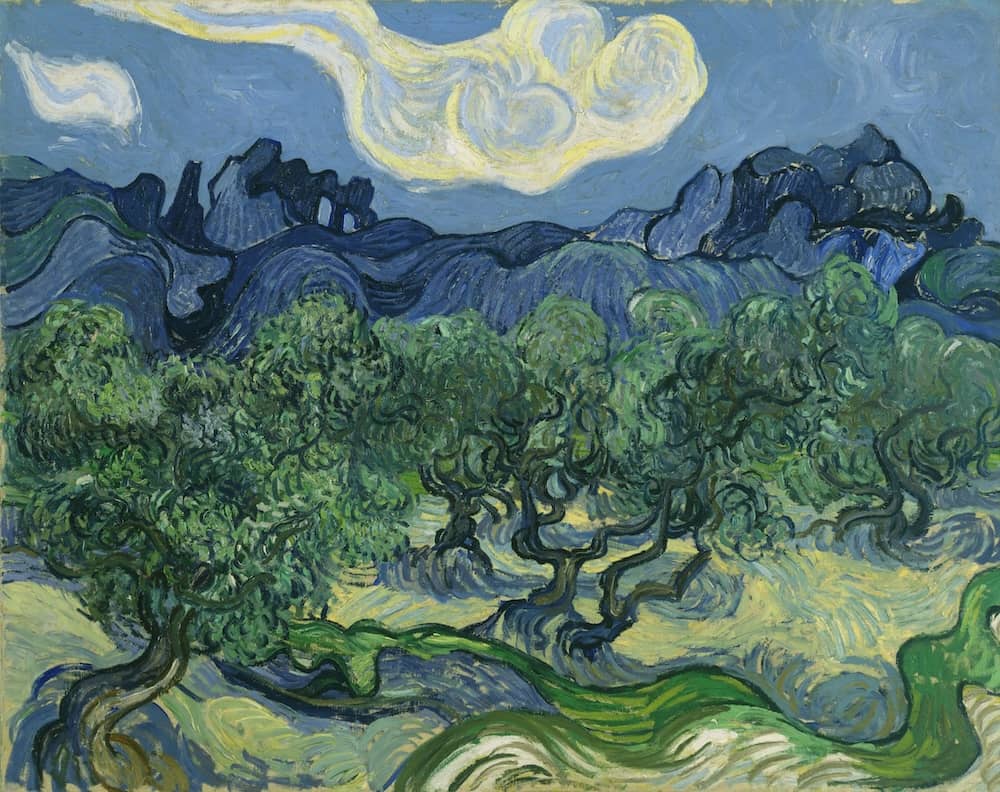Landscape with Olive Trees, 1889 by Vincent Van Gogh

Van Gogh's passionateness fills the entire landscape - ground, trees, mountains, clouds - with a tumultuous heaving motion. It is more powerful and imaginative than anything in later Expressionist art, which proceeded from a similar, emotionally charged vision of nature. It is also more attached to the real, for in the common movement that seems to issue from an underlying force, overwhelming all objects, these retain their individuality, their unique rhythms. It is decided character of each horizontal zone of this turbulent work that keeps the picture from succumbing to the dullness of chaos, which so often results from an artist's immersion in pure feeling. In the visionary cloud, with blue and yellow streaks and wavy outline, vaguely organic, one can see a wraithlike mother and child; in the fantastic rugged silhouette of the mountain with the perforated rocky mass, one sees a ruined castle. Here are new forms of great power. The color too shows an ordered variation, striking in its freshness: the light cloud against the cold greenish blue sky; below, the warmer, light greens of the olive trees against the dark blue of the mountains; and in the lower half of the work the churning sea of the earth with coiling bands of light and shadow, of yellow, blue, and green. Characteristic of the drawing, besides the extraordinary length of the wavy lines - Van Gogh compared the lines with those of old woodcuts - is the depth of their hollows. At first view overpowering in its sustained movement, the landscape offers to continued meditation a surprising range of qualities: the soft floating cloud and the hard rocks; the bland uniformity of the sky color and the fierce changing contrasts of the space below; the furious storm of the brush strokes in the trees and the rhythmical waviness and clarity of the mountains; the uniform local color of sky, mountains, and trees and the wild mottling of the earth. In all these, there is a pervading luminosity, from the distant cloud to the earth beneath the olive trees.




















